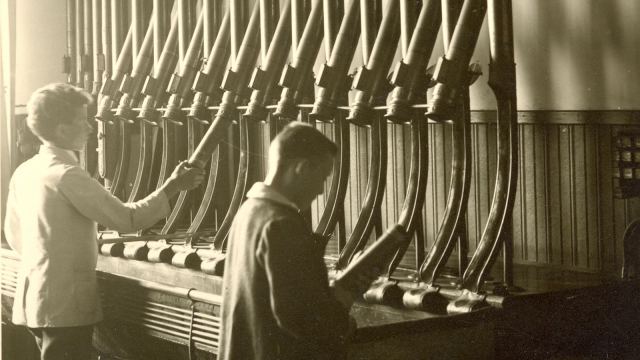You might think of pneumatic tubes as an arcane means of pushing letters around big buildings. But there’s a quiet revolution in the pipeline which could see them challenging digital communication, at least some of the time.
New Scientist’s Jacob Aron has written a wonderful feature about the rebirth of pneumatic tubes as a communication system. It starts off with a good point about the necessary physicality of the world we inhabit. Not everything, after all, can be virtual:
[W]hile the electronic age delivered many of the benefits foreseen by early tube enthusiasts, it is lacking in some respects. Wires cannot transport physical goods, for example. You can order practically anything online and have it delivered to your door, but until the 3D-printing revolution actually happens, it must still be transported by road. Could tubes be more efficient, and greener?
Turns out that it’s not really a question that needs asking, though — because high-tech pneumatic communication systems are already here, embraced by supermarkets, banks and, most enthusiastically, hospitals. Aron explains:
[H]ospital installations are not just pipes from A to B, but networks with junctions and computer-controlled switches. Some are vast: Stanford Hospital in California has 124 stations… The basic mechanics, though, are simple: fans blow air to push capsules one way, and suck to pull them in the opposite direction. Air built up at the end of each tube provides a cushioning brake (see diagram). The modern twist comes with computer-controlled routing and motorised junctions that allow multiple capsules to be transported at once. And each capsule has a radio tracking tag.
As for the future, it seems that the pneumatic tube is far from dead. While they’re not going to give the internet a run for its money, you could see physical objects being delivered by pipe more and more in the coming years. In the meantime, go read the full New Scientist feature — it makes for fascinating reading. [New Scientist]
Picture: BASF/Flickr
